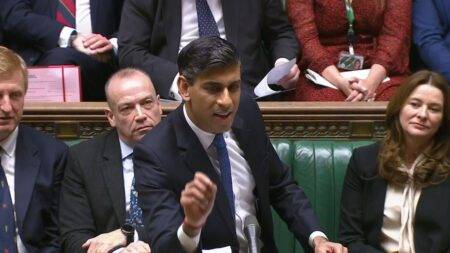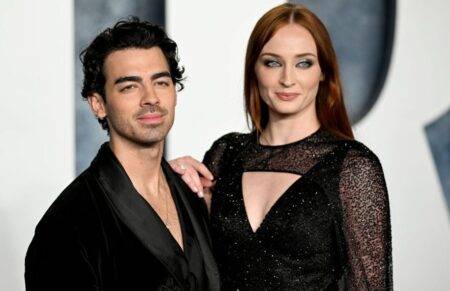Elementor #580218January 18, 20241 Min Read Summary of the Top 6 headlines today Daily Express – Kate doing well after surgery but recovery to take…
Month: January 2024
At least 16 airstrikes hit the Suluki Valley, described by Lebanese sources as the “densest bombardment of a single location” since border area hostilities began three months ago.
It comes after the incident in October which saw video footage showing the driver chanting “free, free, free” before some on the train shouted ‘Palestine’.
The iconic trophy will be lifted again later this year (Picture: Getty)
This summer’s Euro 2024 will see one brand new set of players get their hands on the iconic Henri Delaunay Trophy.
And the victorious team will join an illustrious list of previous European Championship winners, which includes some of the most iconic players and teams in the game.
England will start the tournament as one of the favourites, aided by a favourable draw, with a squad packed full of enviable fire power including Harry Kane, Jude Bellingham and Bukayo Saka.
But they will face competition from the usual cast of contenders, such as Spain, France and hosts Germany, who will all be eyeing the title themselves.
Who has won the most Euros in history?
Spain and Germany are the two most successful countries in the history of the Euros, with three titles apiece.
Germany are steeped in European Championship history (Picture: Getty)
Germany first claimed the top prize in European football in 1972, when they competed as West Germany, with two goals from the legendary Gerd Muller helping them to a 3-0 victory over the Soviet Union in Belgium.
A second title was added at Euro 80, with a brace from Horst Hrubesch seeing West Germany edge Belgium 2-1 in the final in Rome.
Germany won their first trophy as a unified country at Euro 96, famously knocking out England on penalties in the semi-finals before beating the Czech Republic at Wembley.
Spain’s first title arrived at Euro 64, with La Roja triumphing 2-1 over the Soviet Union on home soil.
Spain’s golden generation kick-started their period of international dominance with victory at Euro 2008, with Fernando Torres scoring the only goal of the final against Germany.
Having won the World Cup two years later, Spain made it a hat-trick of major titles by claiming a 4-0 win over Italy in the showpiece in Kyiv.
Spain clinched their third title at Euro 2012 (Picture: Getty)
France have won the European Championships twice in their history, courtesy of victories at Euro 84 and Euro 2000.
Italy can boast being two-time winners of UEFA’s flagship tournament, with wins at Euro 68 and Euro 2020 – the latter following a penalty shootout win over England at Wembley.
The first ever Euros were won by the Soviet Union in 1960, who scraped past Yugoslavia 2-1 in Paris in the only major honour the country won.
The Czech Republic (1976), Denmark (1992), Greece (2004), Netherlands (1988) and Portugal (2016) are the only other sides to have tasted success at the Euros.
List of Euro winners
Germany – 3 (1972, 1980, 1996)
Spain – 3 (1964, 2008, 2012)
France – 2 (1984, 2000)
Italy – 2 (1968, 2020)
Soviet Union – 1 (1960)
Czech Republic – 1 (1976)
Portugal – 1 (2016)
Denmark – 1 (1992)
Greece – 1 (2004)
Netherlands – 1 (1988)
Which teams have appeared in the most finals?
Germany have appeared in six finals altogether, with their defeats coming in 1976, 1992 and 2008.
Spain have featured in four, with their only loss coming in 1984, whilst Italy have also reached the final on four occasions.
The Soviet Union join Germany as the team with the most final defeats, with three losses in four finals.
France have contested three finals, whilst Czech Republic, Portugal and Yugoslavia have made it to two.
Belgium, Denmark, England, Greece and Netherlands have all played in one European Championship final each.
MORE : Why England star Harry Kane could earn an absolute fortune at Euro 2024
MORE : Full guide to buying Euro 2024 tickets including sales windows and cost
For more stories like this, check our sport page.
Follow Metro Sport for the latest news on Facebook, Twitter and Instagram.
‘This was a brutal attack that left the victim with a serious injury that required stitches and months of healing.’
Following fan feedback, the sequel to S.T.A.L.K.E.R. has been pushed back in order to fix ‘technical imperfections’.
Rwanda plan: What’s next after Sunak wins vote? Rwanda plan passes key vote Video by Adam Smith Rishi Sunak’s flagship Rwanda plan has passed a…
Rwanda vote is a win for Sunak, but it has come at a cost Sky’s political editor Beth Rigby writes: In the end the rebellion…
Deadline to restore Northern Ireland Executive to expire The deadline to restore Stormont’s government ends tonight at midnight. If there’s no government by 23:59 GMT,…
Today’s news summary – Paper Talk: Rishi’s Rwanda bill survives revolt Thursday’s front pages report on the government’s success in seeing off a revolt by…
‘;Emotionally, a massive hole has been left in our lives and our hearts.’
We’re all on edge (Picture: BBC/Studio Lambert/Mark Mainz)
This season of BBC’s The Traitors is just as gripping as the first and, let’s be honest, it’s the only thing that’s making January slightly more bearable.
But it’s also got us thinking about the art of deception – as well as how to spot those who aren’t being honest with us.
The psychological competition sees 22 strangers play the ultimate game of detection, backstabbing, and trust.
So far this series, the faithful have managed to successfully uncover a traitor but there are still three at large within the group – and things really amped up last week as fan favourite Dianne got caught in the firing line.
Just like the first season, the series has gripped viewers and is overflowing with deceit.
But it has got us thinking about how we would fare in such a situation.
While easy to dissect from the comfort of our couches, in reality, trying to analyse whether someone is dishonest is difficult.
Whether we like it or not, lies are told every day on this earth, and most of the time, we don’t even know it.
Yet, there are ways to decipher if another is being deceitful.
‘Bear in mind that these are just pointers,’ NLP trainer and life coach Andy Coley tells Metro.co.uk
‘Different people communicate in different ways. Trust your instincts first and foremost, particularly with those you know well.’
Eye contact
Don’t rely on eye contact (Picture: Getty Images)
It turns out, eye contact might not be the clue you’re looking for.
‘Whether they look at you or not is not really a sign of lying,’ he explains. ‘It can be a cultural thing if someone chooses not to look you in the eye.
‘A 2015 study by the University of Michigan actually showed that 70% of people in 120 media clips lied while maintaining direct eye contact.
‘Instead, does their pattern of eye contact change? If they normally look away to answer but they maintain contact for a question, or if they normally maintain eye contact but then look away for a question – this is what you are looking for.
‘Spotting shifts in “normal” behaviour can be a clue.’
Facial touching
Notice someone touching their face more than usual? This could be a sign of a big fat lie.
‘People who are lying may touch their face or mouth more often than usual,’ Andy says. ‘They may hide their mouth behind their hand when replying. This is as if they are trying to hide the fact they are not telling the truth.’
Fidgeting
Lying can cause a physical reaction in many people.
Andy explains: ‘If they start shifting uncomfortably in the seat, shuffling or swaying about or tapping feet, wringing hands or generally appear nervous, they could be withholding information or changing a story.
‘When we are lying it affects our nervous system and we can end up feeling itchy or tingly and that appears externally as fidgeting.’
Head shakes and nods
Andy urges people to keep a close eye on head movements.
‘If the other person is saying no but nodding their head or saying something positive but shaking it from side to side, those are termed as non-congruent gestures,’ he adds.
‘Normally if we say no, we shake our head, and when we say yes, we nod. If these signals are mixed up, they can give a clue that something conflicting is happening between their thoughts and their words.
‘This was something I saw happen in people many times when I started coaching.’
What they say and how they say it
Experts share some of the key signs (Picture: Getty Images/iStockphoto)
Sometimes, we don’t truly listen to others. Andy says this is a common way to miss the lie.
‘People who are lying may pause before answering a question, as if they are trying to come up with a convincing lie,’ he explains.
‘Also look for holes in the story. If you ask someone questions about what they’ve said, a liar may well start to contradict themselves and forget what was said previously.
‘They might become defensive about being asked questions and manipulate the situation to put you in the situation that you caused offence. People should be able to answer such questions easily. It shouldn’t be an ordeal.’
Other signs
Senior therapist Sally Baker has done much work in the area of body language and has an exhaustive list of tell-tale signals.
‘A liar may slouch and shrink to make themselves smaller,’ she explains.’Sometimes they will almost slip into themselves, slouching and shrinking to subconsciously protect their body while they lie.
‘They may lean away from the person they are lying to or cross their legs so that their top leg blocks the person they are lying to.
‘Also they may sit with their back half turned towards said person.’
Finally, there are emotional cues to take note of too.
Someone who is lying will do everything in their power to convince you what they are saying is the truth.
‘Liars typically want to trick the other person into thinking they’re calmer than they are, so they choreograph their movements to reflect this by trying to manifest a fake aura of calm,’ Sally says.
‘They might slow down their speech and their movements.
‘And more than anything, a liar will overshare. They’re trying to convince you of something that is not true.
‘So instead of saying less, they counterintuitively tell you more than they need to. Take note.’
Do you have a story to share?
Get in touch by emailing [email protected].
MORE : The Traitors villain Paul makes fans ‘physically sick’ with concerning tweet
MORE : The Traitors viewers call out shockingly ‘obvious’ behaviour during wild mission
Anne spilled the beans on all things The Chase.
Rishi Sunak sees off Conservative rebels as MPs back Rwanda bill Rishi Sunak has successfully steered his crucial Rwanda bill through the House of Commons,…
US launches fourth round of strikes on Houthi targets in Yemen On Wednesday night, Pentagon officials confirmed that the United States conducted a fourth round…
Pakistan launches retaliatory strikes on Iran, with reports of seven killed Pakistan has launched missile strikes into Iran, targeting alleged “terrorist hideouts” in the Sistan-Baluchestan…
The Princess of Wales has been hospitalized after undergoing planned abdominal surgery and will remain at a private hospital for up to two weeks, Kensington Palace said Wednesday. The former Kate Middleton is expected to return to public duties after Easter, the palace said. The 42-year-old future queen was admitted to The London Clinic on Tuesday.
‘My serious concern was that she was going to end up killing herself or come to some serious harm.’
Next week’s EastEnders episode guide revealed with a secret coming to light and several exits.
Next week’s Emmerdale episode guide revealed with a horrifying showdown and an emotional admission.
Minimal effort for maximum reward, we say.
New homeowners discovered a bag of what appeared to be human remains in a deep freezer on their yard in Grand Junction, Colorado.
The controversial Bill is accused of violating international law.
‘Met Office warnings highlight the ongoing likelihood of travel disruption, the possibility of power cuts and the chance that some rural communities will be cut off. ‘
Sophie and Joe announced their separation last year.

























